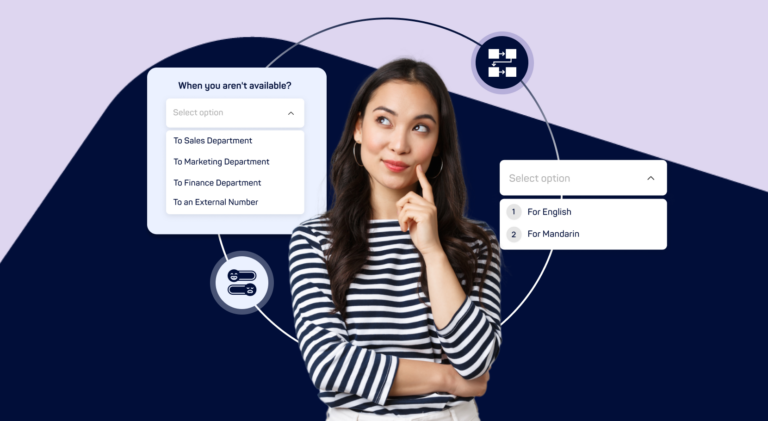Discover the evolution of Activeo Singapore as we transition to Activeo APAC, reflecting our commitment to bridging business and IT while driving digital transformation in the broader Asia Pacific region.
What would it be like if we didn’t need to rely on customer support – an environment where the dependence on customer service is drastically reduced or made altogether obsolete?
Even better, what if companies take a proactive stance, fine-tuning their operations to cater to customer needs and ensuring a seamless customer journey.
Sounds far-fetched?
It’s actually known in customer experience (CX) circles as the “Best Service is No Service” approach.
First introduced by Bill Price and David Jaffe in their influential 2008 publication, “The Best Service is No Service: How to Liberate Your Customers from Customer Service, Keep Them Happy, and Control Costs,” this strategy breaks all the rules on on customer service, challenging age-old notions.
The book lays out seven foundational tenets.
In this blog post, we’ll explore these principles and how they can fundamentally reshape your customer service paradigms while fostering customer loyalty.
1. Remove unnecessary customer touchpoints
These are also known as ‘dumb contacts’ because they are common hurdles in the customer journey that could have been easily avoided – but because they were not avoided, customers continue to reach out for customer support.
Best Service is No Service begins with pinpointing and eliminating these common triggers.
From our observation, some prevalent triggers include:
- Ambiguous product descriptions
- Confusing instructions
Leveraging tools like Speech Analytics can offer insights from conversations in your Contact Centre, helping gauge if your product data resonates with customer expectations and enhances their overall experience.
For example, a healthcare institution might employ Speech Analytics and find out that numerous patients grapple with their appointment scheduling system, be it online or telephonically.
Equipped with these insights, the institution can then refine the scheduling guidelines to make them more intuitive and even introduce a comprehensive guide or instructional video.
The endgame?
To minimise the volume of patients seeking help related to appointment reservations.
2. Design intuitive self-help tools for customers
By crafting intuitive platforms, businesses grant their customers the autonomy to resolve queries on their own, thus diminishing the frequency of direct interactions with the company.
Consider a healthcare facility introducing an Interactive Voice Response (IVR) system to provide automated support for their patients.
Through this platform, patients can navigate a range of functionalities, such as:
- Scheduling appointments
- Reordering medications
- Retrieving diagnostic outcomes
All of these can be accomplished without the need for verbal communication with any staff.
By presenting effective and user-centric self-help tools, healthcare institutions can optimise their workflows, curtail patient wait times, and in the end, offer a seamless, patient-focused experience.
3. Anticipate and address customer needs proactively
Proactivity is at the core of the Best Service is No Service philosophy.
It emphasises predicting customer requirements and addressing them ahead of time, preventing them from becoming bigger concerns.
Adopting this proactive stance not only reduces the demand for direct customer assistance but also builds a foundation of trust among customers.
They feel valued and constantly in the loop.
To illustrate, consider the initial phases of the pandemic when flight cancellations became rampant. Some airlines took the initiative to manage customer queries about reimbursements by launching a digital request portal on their site.
The result?
- The portal was easy to navigate
- It was easy to make reimbursement requests without calling in person
- Calls reduced
- Facilities saw fewer walk-ins
- Customers shared positive feedback on social media, commending the portal
This move effectively anticipated the surge in calls and walk-ins and tackled the root of problem ahead of time.
4. Create hassle-free communication channels
In other words, don’t make it difficult for customers to contact you.
Presenting the channels that customers want to communicate on more prominently, will ensure smooth communication, and elevate customer satisfaction levels when they seek assistance.
Toku’s findings from their Consumer Engagement Report 2022 confirmed this; revealing that 71% of customers in Singapore would be frustrated if a company has no local number to call when needed.
The issue of catering to communication preferences also features frequently in our work with healthcare organisations.
For example, our CX Consulting team has partnered with health institutions to institute effective call direction frameworks, providing insights into structuring the communication sequence for prevalent call categories.
For one such health service provider, we helped them to augment their customer interaction points, incorporating instant online messaging in addition to traditional communication methods.
By presenting an array of touchpoints, including a specific support line, email assistance, and real-time chat, they’re addressing diverse patient communication preferences.
5. Ensure comprehensive issue resolution across departments
When a customer faces an issue, it’s seldom because of just one department.
There are several departments involved, which is why owning the issue across the company is critical.
Taking full responsibility by identifying where the issue is happening and working together with other departments to tie up the loose ends demonstrates a commitment to effortless service experiences.
Let’s consider a large travel and transportation organisation, such as an airline, striving to provide a seamless customer experience.
To achieve this, they follow these steps:
- Simplify and identify key customer intents,
- Mapping the customer intents throughout the entire journey of their frequent flyer programme,
- Quantify the end-to-end cost for each customer intent.
With this knowledge, the airline can truly ‘own the issue’ by better allocating resources and streamlining processes to reduce any unnecessary contacts and touch points.
6. Value feedback and implement changes
As a guiding principle, businesses should avoid soliciting feedback unless they’re equipped with a strategy or system to address the insights received. Beginning a feedback initiative without the intent to act upon it is counterproductive.
We’ve partnered with various enterprises to facilitate proactive feedback collection, leveraging it to fine-tune offerings, services, and operational procedures. Our strategies encompass various approaches like assessing data from customer interaction hubs and executing feedback questionnaires.
Pro tip: Structure your feedback assimilation and action plan before reaching out for opinions. Merely collecting insights without reciprocation can alienate customers who spent their valuable time sharing their thoughts.
7. Prioritise customer-centric metrics for superior service
No one starts their day thinking, “I can’t wait to phone my bank about a problem with my account!”
What everyone desires is simplicity and reliability.
That is why it’s imperative for businesses to adjust their performance indicators towards a customer-centric outlook.
Take a contact centre for instance. Instead of prioritising metrics like first contact resolution, it’s more impactful to track recurring problems, urging your team to collaborate and root out these persistent issues.
By championing the Best Service is No Service approach, businesses can address and neutralise the underlying problems that inflate their customer support expenses.
Conclusion
When businesses, especially those in their early stages or considering automation initiatives, integrate these seven fundamental principles, they can:
- Revamp their approach to client service,
- Optimise their operational workflow, and
- Provide consistent and smooth interactions for customers.
A customer-first mindset not only can fortify relationships with existing customers but also captivate potential clients, positioning your business for accelerated growth in an ever-evolving landscape.
 Rosaline Oh
Rosaline Oh 


 Jonathan Mondon
Jonathan Mondon 
 Angie Yeo
Angie Yeo 